What is Miso Nikomi Udon?
Miso Nikomi udon (味噌煮込みうどん) is a delicious noodle dish that is typically served in a red miso broth. While many udon dishes are made with a light dashi broth, miso nikomi udon breaks the rules with its strong and rich flavor profile.
It is a type of Nabeyaki Udon, which means that it is typically served in an earthenware pot.
One of the reasons why miso nikomi udon has such a rich and deep flavor is because it is made with red miso paste. This miso is primarily produced and consumed in Aichi Prefecture, located in central Japan.
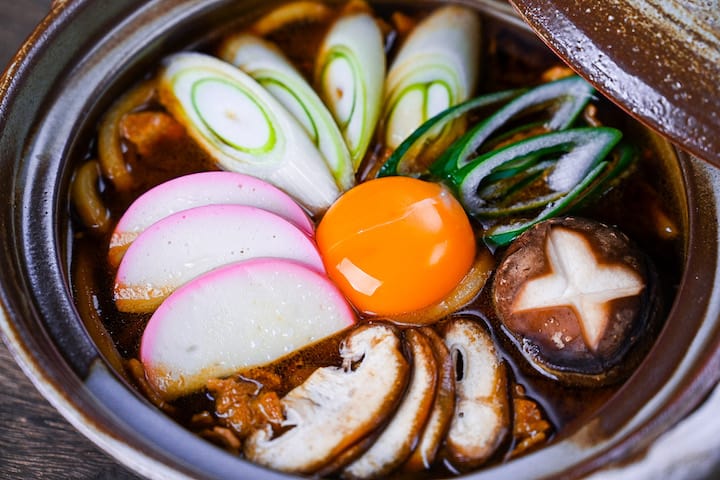

How I Developed This Recipe
I grew up in the area, and miso nikomi udon was more than just a dish—it was a cherished memory from my childhood.
In fact, there was an old-fashioned udon restaurant next door to the apartment block where I lived, and it is safe to say that I grew up with miso nikomi udon. With this recipe, my mission was clear: to capture the authentic essence of miso nikomi udon I grew up with.
My goal with this recipe was simple: to capture the true essence of miso nikomi udon from my childhood.
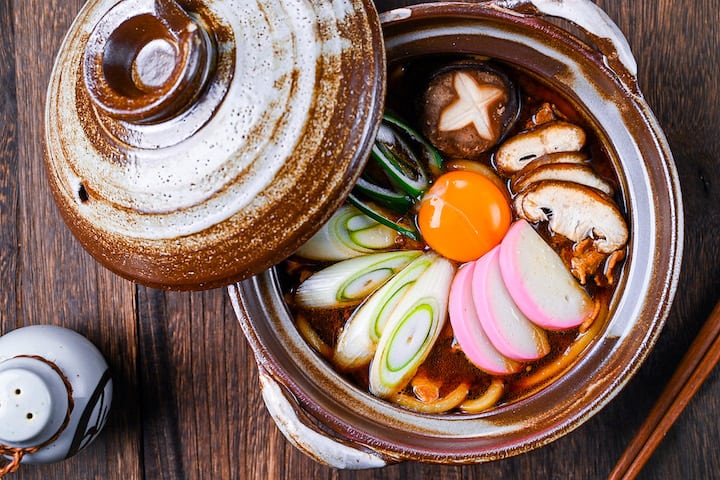
Ingredients & Substitution Ideas
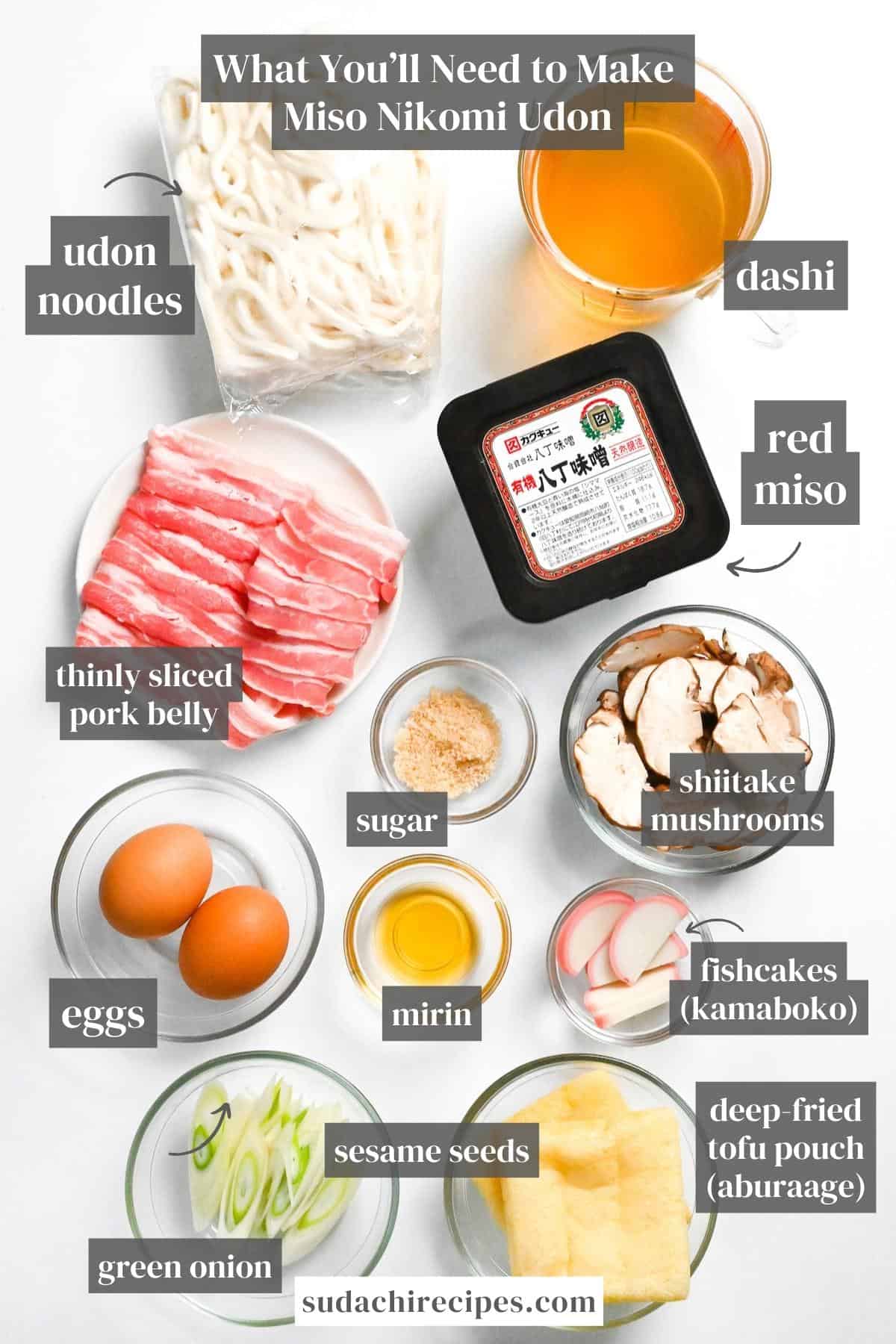
- Udon Noodles: You can choose from pre-boiled, dried, or frozen varieties, and they all work great. For a truly authentic experience, check out my homemade udon recipe.
- Thinly Sliced Pork Belly: This traditional protein gives the dish a rich, umami flavor. If you can’t get it, use chicken thighs.
- Dashi Broth: You can go for my favorite kombu and bonito dashi, or check out my vegan shiitake dashi recipe. For busy weeknights, high-quality dashi packets are a great option for a convenient shortcut.
- Red Miso Paste: If you want an authentic depth of flavor, I suggest you try Hatcho Miso.
- Sugar: While standard white sugar works just fine, I’ve been using light brown cane sugar recently.
- Mirin: For the best quality, look for “hon mirin” (本みりん).
- Vegetables: I usually throw in some thinly sliced Japanese leek or regular leek, along with some fresh shiitake mushrooms.
- Fried Tofu Pouch (Aburaage): While it’s not a must, these golden pouches soak up the miso broth really well, making your soup extra flavorful.
- Japanese Fish Cake (Kamaboko): Another optional ingredient that adds a bouncy texture and a pop of color (usually pink or white) to your dish.
Curious about the exact brands and products that bring my recipes to life? Discover the brands and ingredients behind my recipes at the Sudachi Amazon Storefront. Explore my handpicked pantry essentials and find your next kitchen favorites!
Jump to Full Recipe Measurements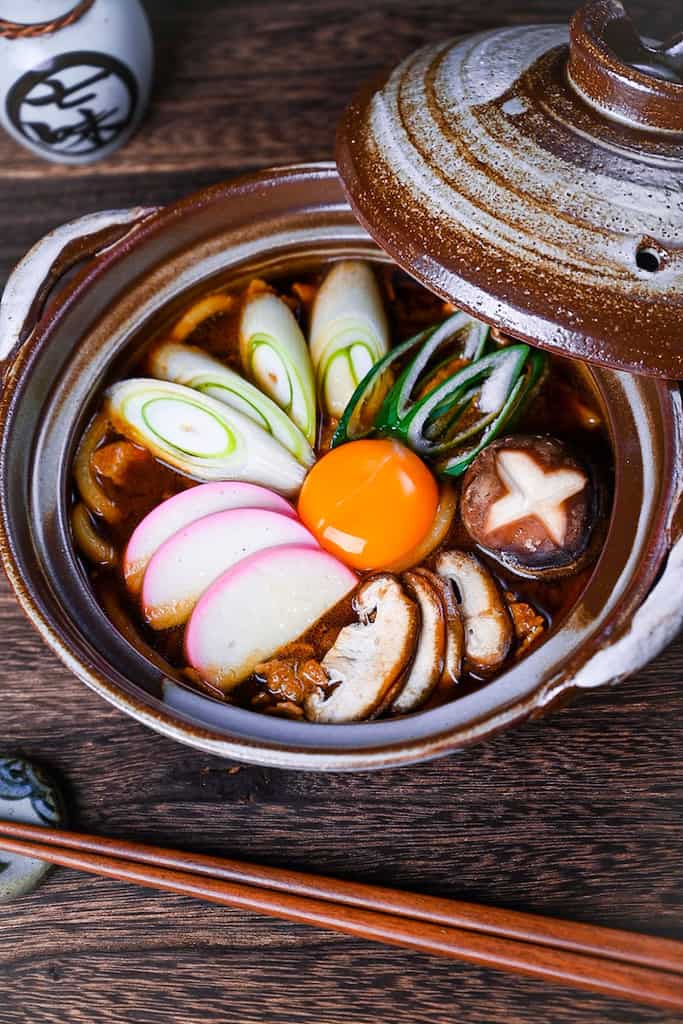
Visual Walkthrough & Tips
Here are my step-by-step instructions for how to make Miso Nikomi Udon at home. For ingredient quantities and simplified instructions, scroll down for the Printable Recipe Card below.
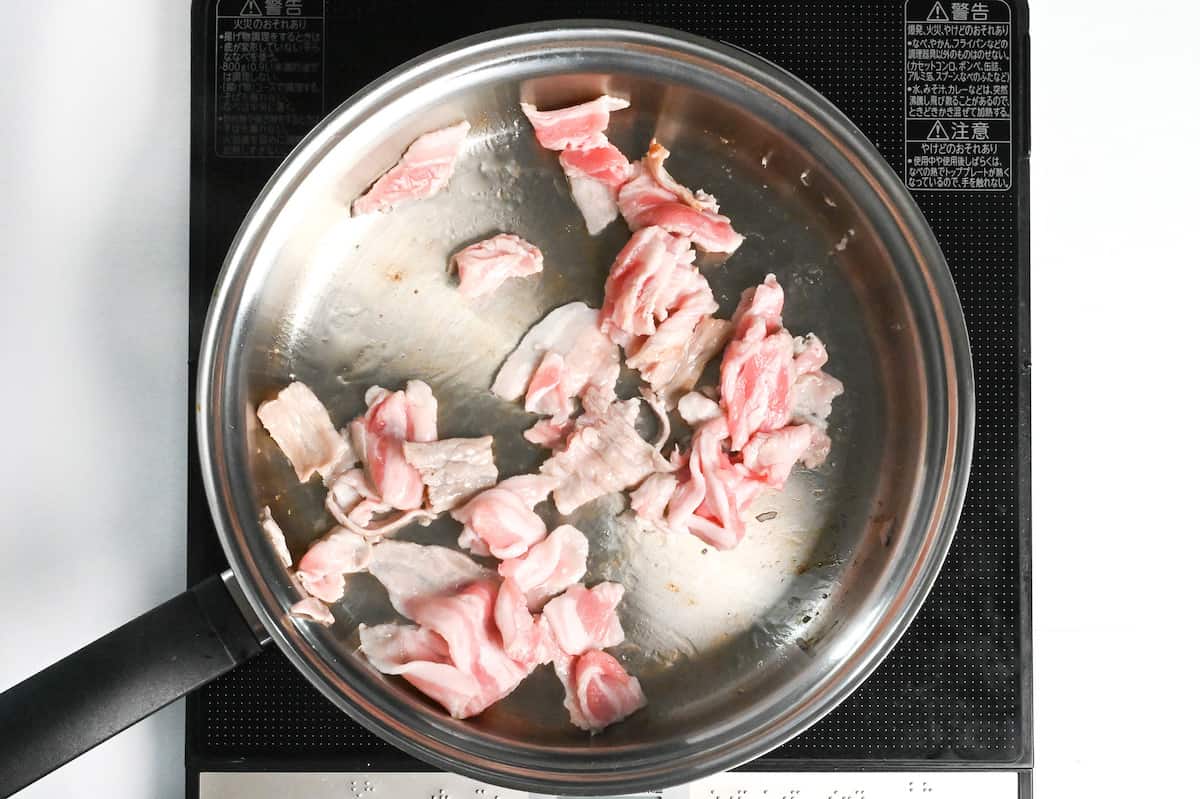
Start by heating a frying pan over medium heat. Once it’s nice and hot, drizzle in some oil and add the pork belly.
Let it sizzle and sear until the fat turns a delightful shade of crispy golden.
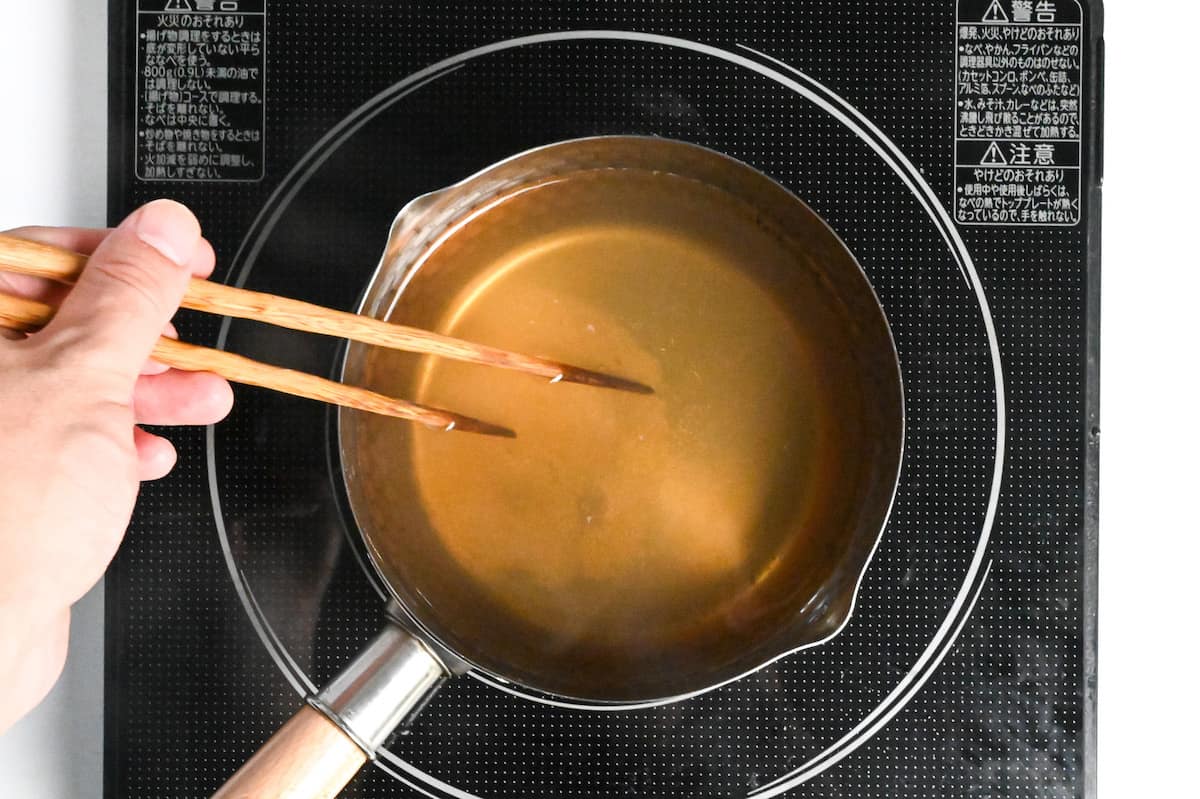
In a separate pot, pour dashi stock and set it over medium-high heat. As it warms up and is almost boiling, stir in 2 tsp each of sugar and mirin until they dissolve into the broth.
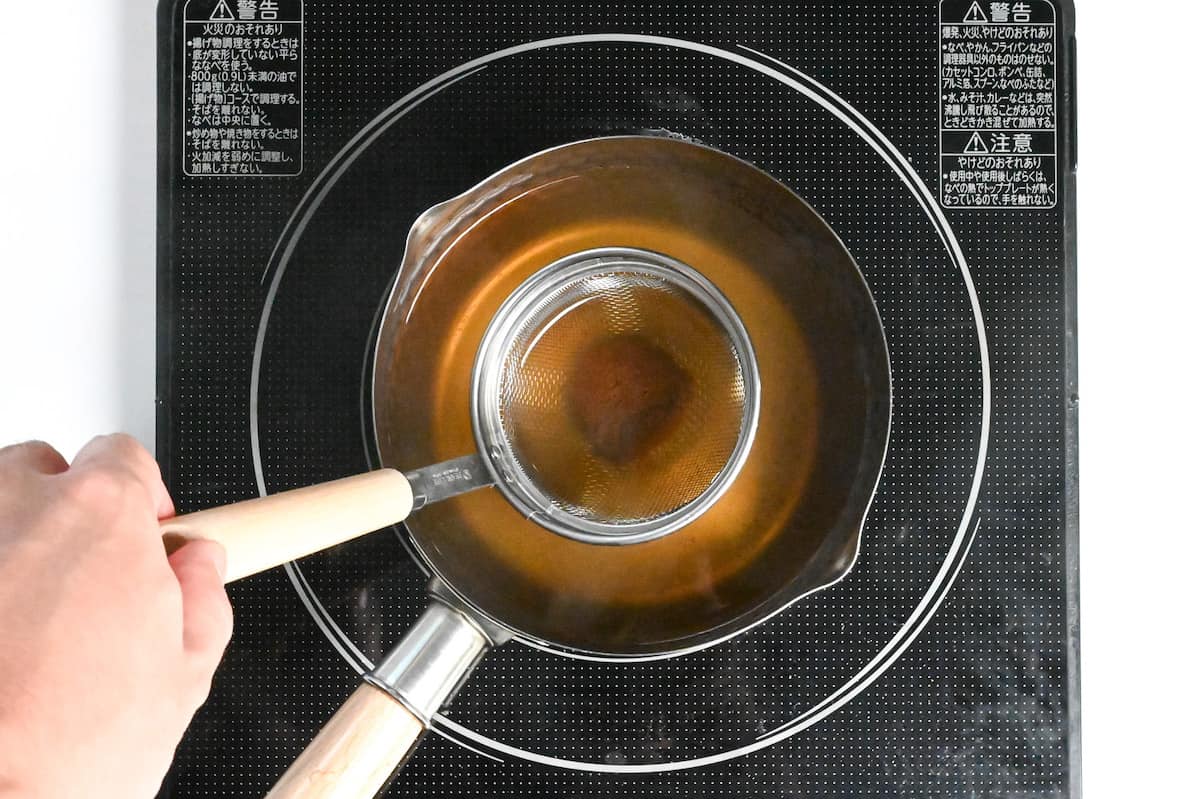
Scoop red miso paste onto a mesh spoon or ladle. Briefly dip it into the dashi broth. Using a small whisk or chopsticks, break up the miso paste, blending it smoothly into the broth.
If you prefer, whisk the miso with a small amount of hot dashi in a separate bowl until smooth, and then mix it into the main broth.
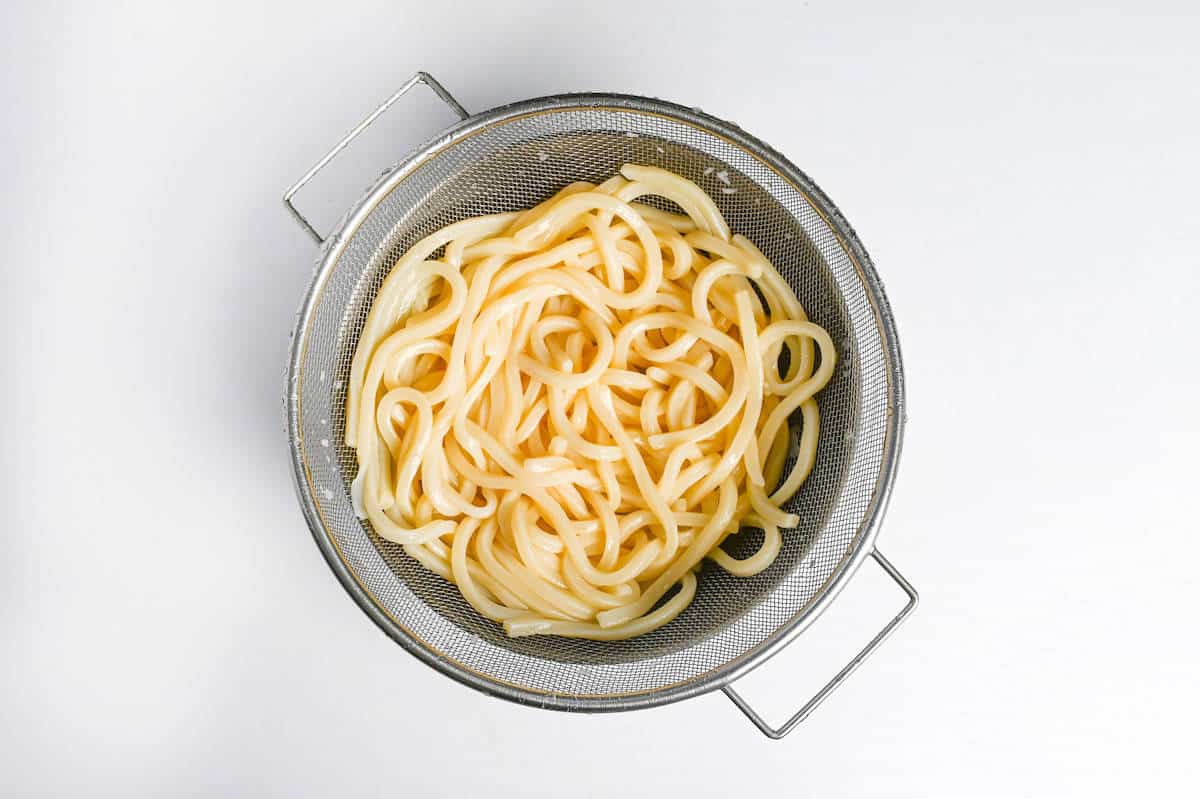
Cook udon noodles using your preferred method.
It is best to boil them hard, as they will be cooked again after with everything is added to the pot.
Once done, rinse them with hot water to wash any extra starch.
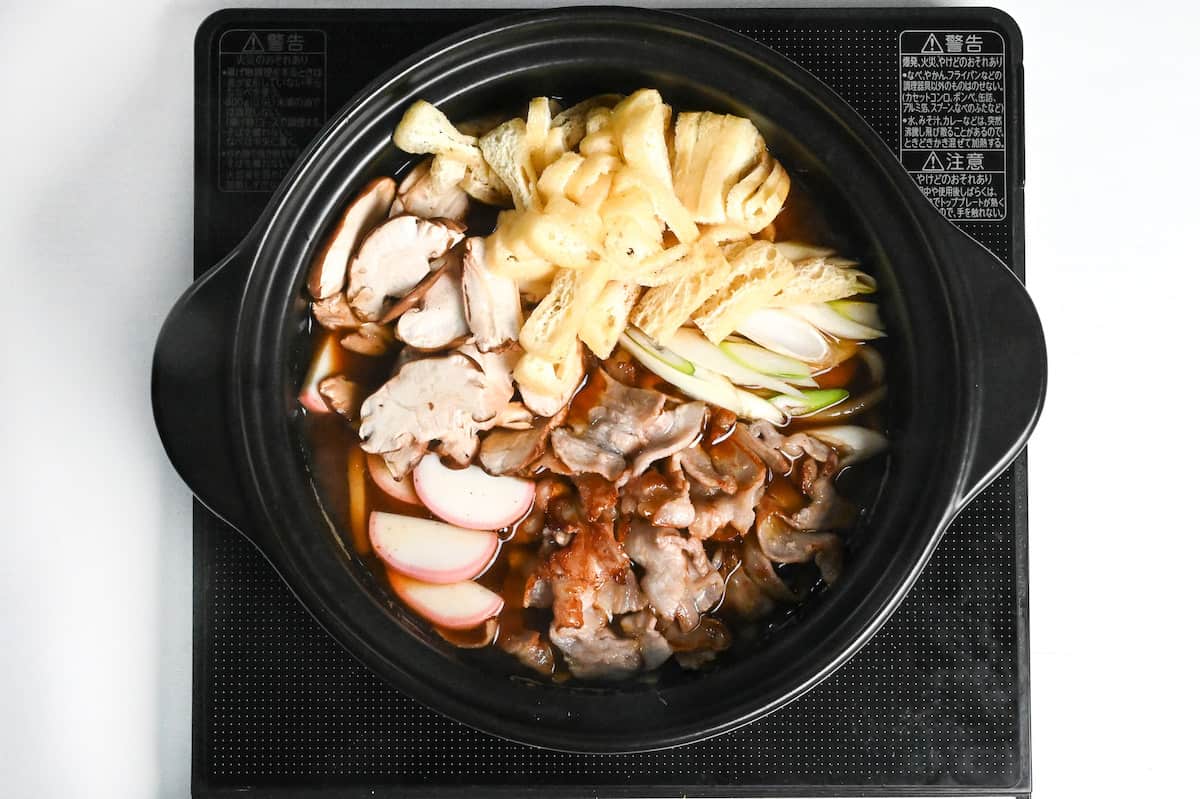
Transfer the udon noodles and the beautifully seared pork belly to the dashi broth. Add green onions, fresh shiitake mushrooms, fried tofu pouches, and Japanese fish cake “kamaboko.”
Let everything simmer together for about 3 minutes.
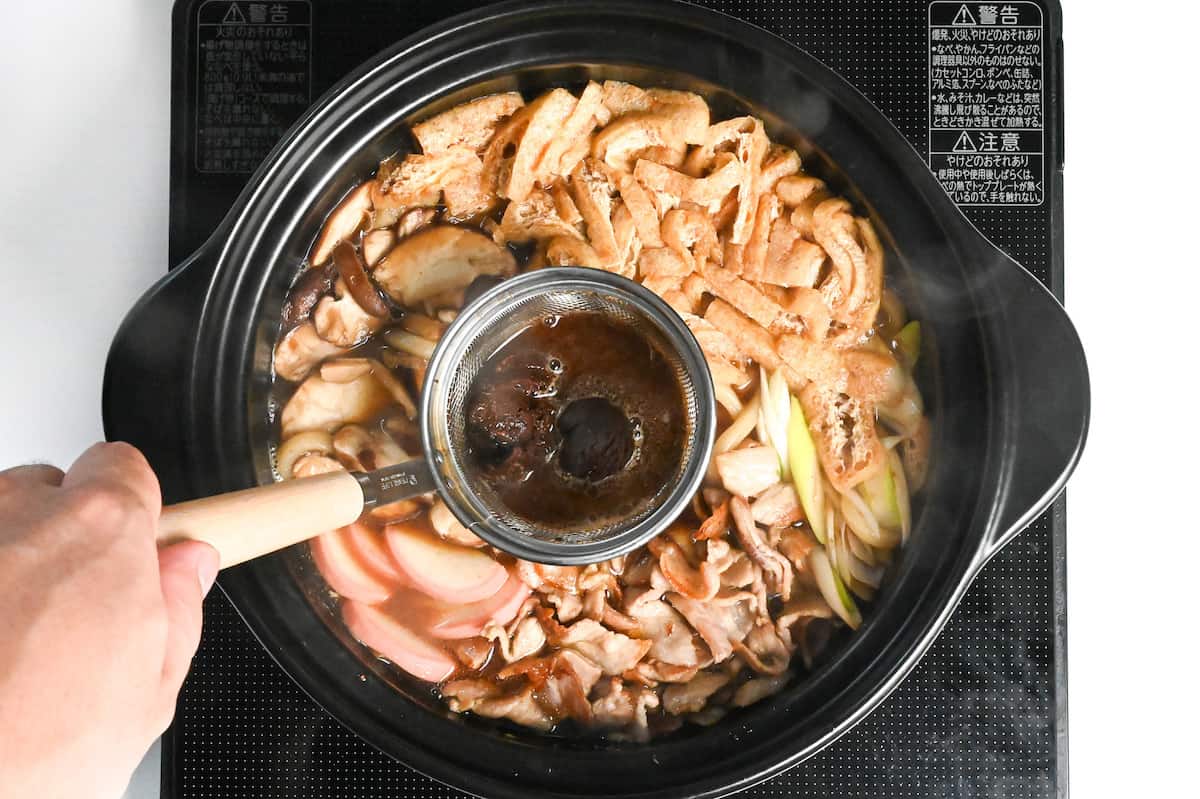
Turn the heat down to low and incorporate another helping of red miso paste using the same method.
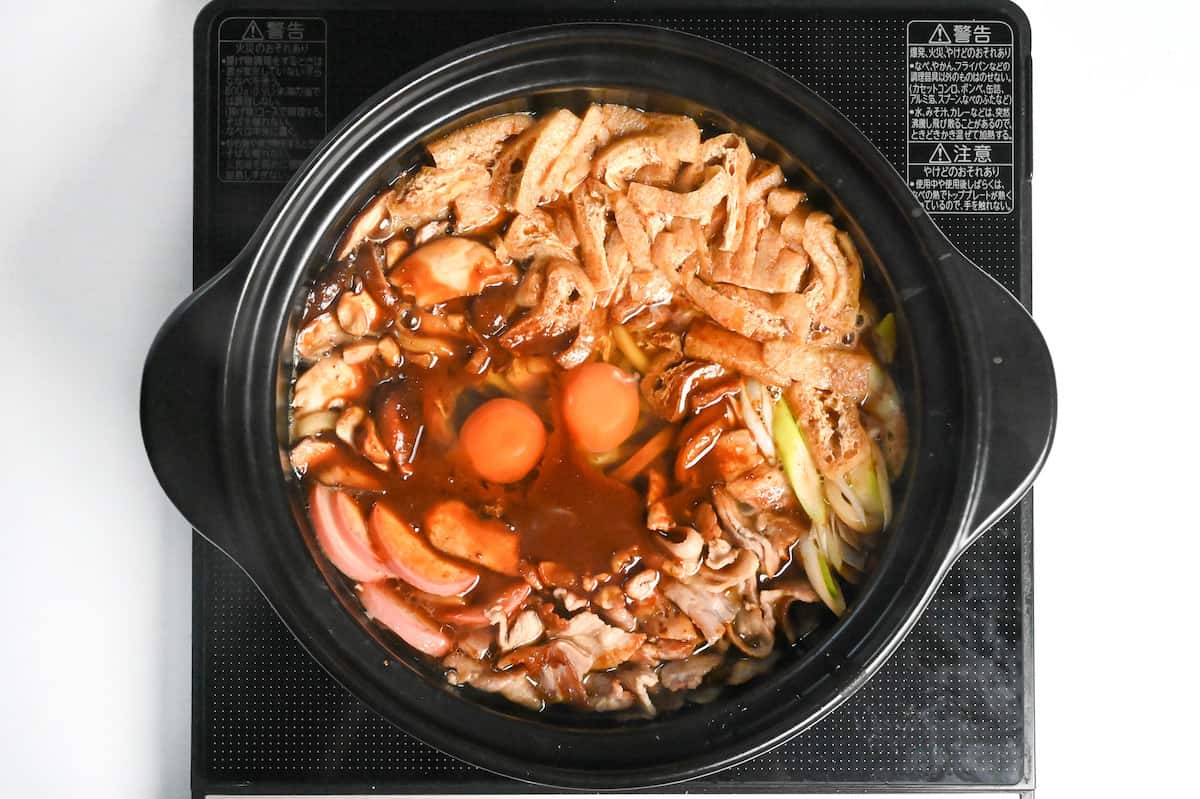
Now, for the grand finale, crack eggs into the pot. Cover with a lid and cook for about 2 minutes or until the eggs are just how you like them.
Jump to Full Recipe Measurements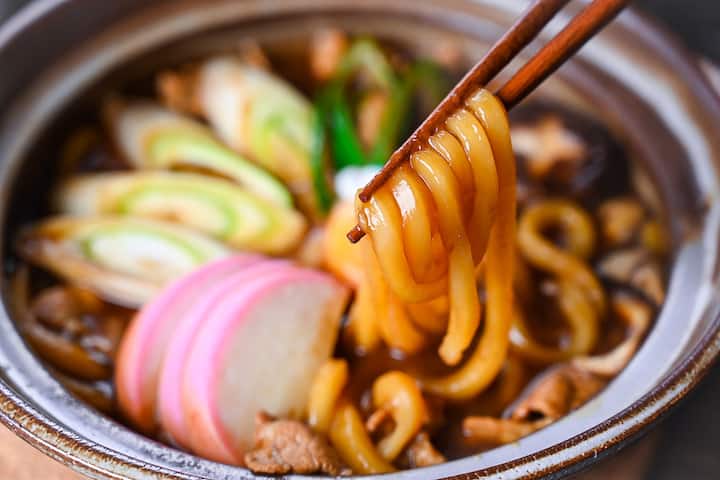
How to Store
There’s nothing quite like enjoying freshly made Miso Nikomi Udon. This comforting dish is best served and eaten immediately. However, if you happen to overestimate your appetite, it’s possible to store the soup in the refrigerator.
Just remember to remove the noodles from the soup beforehand. Leaving the noodles in the soup for too long can cause them to lose their texture and become soft and mushy.
The soup should be stored in a sealable container in the refrigerator for one to two days.
Storage summary
Room temperature – Not recommended.
Refrigerated – 1-2 days (soup only).
Frozen – Not recommended.
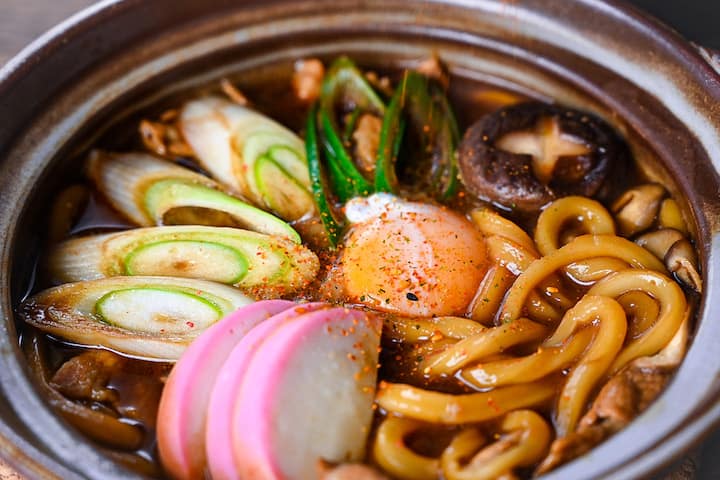
I hope you enjoy this Miso Nikomi Udon recipe! If you try it out, I’d really appreciate it if you could spare a moment to let me know what you thought by giving a review and star rating in the comments below. It’s also helpful to share any adjustments you made to the recipe with our other readers. Thank you!
More Nagoya Recipes
- Yamachan Tebasaki Chicken Wings
- Miso Katsu (Pork Cutlet with Red Miso Sauce)
- Hitsumabushi (Nagoya Style Grilled Eel)
- Taiwan Mazesoba (Nagoya’s Spicy Brothless Ramen)
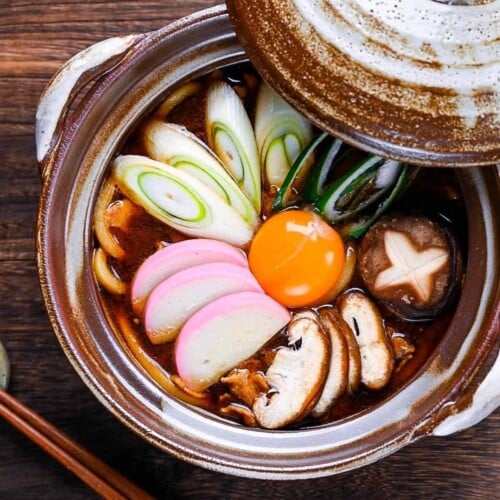
Miso Nikomi Udon (Nagoya’s Red Miso Udon)
Ingredients
- 150 g thin sliced pork belly or chicken bitesize pieces
- 500 ml dashi stock
- 2 tsp sugar
- 2 tsp mirin
- 1 tbsp red miso paste to flavor the ingredients, preferably hatcho miso
- 2 tbsp red miso paste to flavor the soup
- 2 portions udon noodles
- 50 g green onion sliced
- 50 g fresh shiitake mushroom sliced
- 2 egg
- 2 pieces fried tofu pouch (aburaage) aburaage (optional)
- 6 kamaboko fish cake kamaboko, sliced, optional
Instructions
- Heat up a frying pan on a medium heat, once hot add a drizzle of oil and 150 g thin sliced pork belly. Sear the meat until the fat is slightly crispy.

- Take a pot and add 500 ml dashi stock. Heat up on medium/medium-high. Once the dashi is almost boiling, add 2 tsp sugar, 2 tsp mirin and mix until dissolved.

- Place 1 tbsp red miso paste onto a mesh spoon or ladle and submerge it into the dashi broth briefly. Use a small whisk or chopsticks to break it up and gradually incorporate it into the broth. (Alternatively, place the miso paste in a small bowl with a few tbsp of the hot dashi, break up/whisk until there are no more lumps of miso and then pour it into the rest of the broth.)

- Cook 2 portions udon noodles in a separate pot for 3 minutes less than the packaging states and rinse with hot water to remove the excess starch.

- Transfer the udon noodles, meat and the rest of the ingredients (50 g green onion, 50 g fresh shiitake mushroom, 2 pieces fried tofu pouch (aburaage), 6 kamaboko fish cake) to the dashi broth and cook for 3 minutes.

- Turn the heat down to low and incorporate 2 tbsp red miso paste using the same method as before.

- Crack 2 egg into the pot.

- Place a lid on top and continue to cook for about 2 minutes or until the eggs are done to your liking.

- Enjoy!

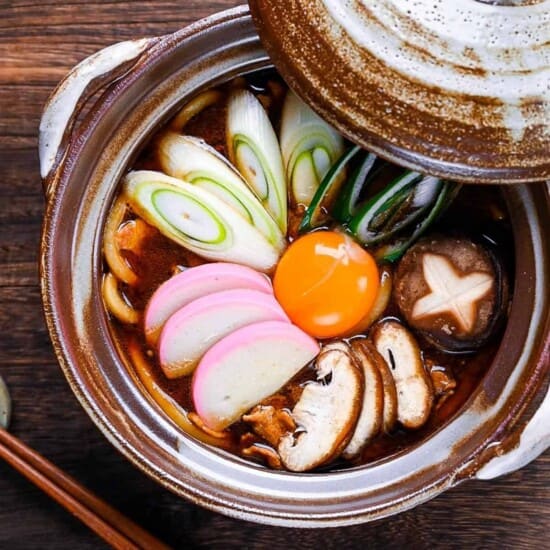


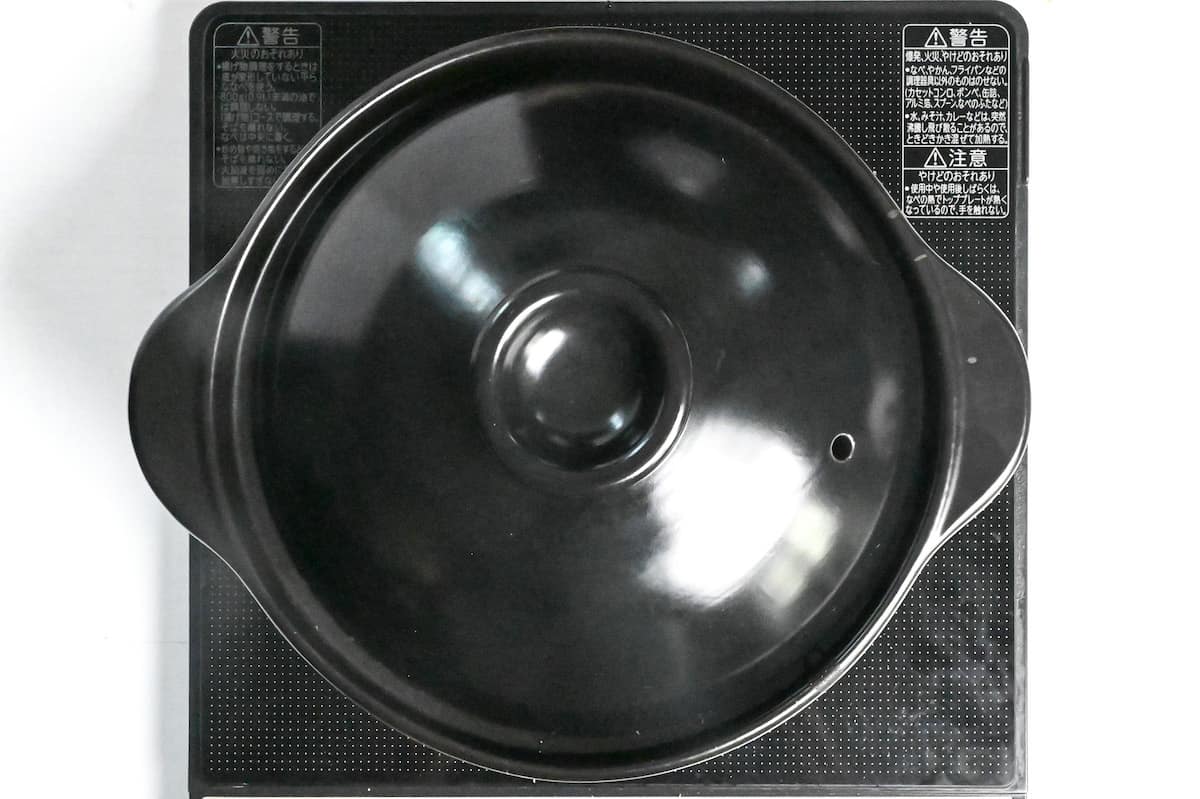
Leave a rating and a comment